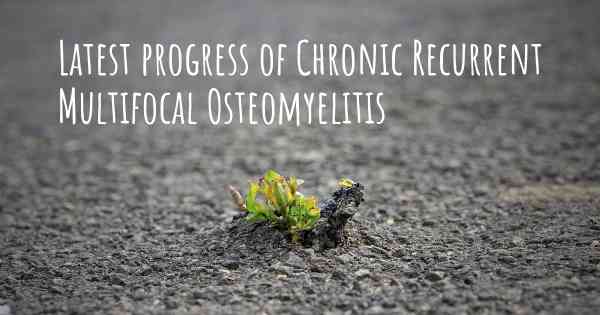What are the latest advances in Chronic Recurrent Multifocal Osteomyelitis?
Here you can see the latest advances and discoveries made regarding Chronic Recurrent Multifocal Osteomyelitis.

Chronic Recurrent Multifocal Osteomyelitis (CRMO) is a rare autoinflammatory bone disorder primarily affecting children and adolescents. It is characterized by recurrent episodes of bone pain, inflammation, and swelling in multiple sites throughout the body. The exact cause of CRMO is still unknown, but recent advances in research have shed light on various aspects of this condition.
Genetic Factors: Studies have identified several genetic factors that may contribute to the development of CRMO. Mutations in the genes associated with the immune system, such as the PSTPIP1 and LPIN2 genes, have been found in some individuals with CRMO. These findings suggest a possible genetic predisposition to the disease, although more research is needed to fully understand the role of genetics in CRMO.
Immune Dysregulation: Researchers have also focused on the immune dysregulation observed in CRMO. It is believed that an abnormal immune response triggers an inflammatory reaction in the bones, leading to the characteristic symptoms of the disease. Recent studies have highlighted the involvement of specific immune cells, such as T cells and neutrophils, in the pathogenesis of CRMO. Understanding these immune mechanisms may pave the way for targeted therapies in the future.
Diagnostic Tools: Accurate diagnosis of CRMO is crucial for appropriate management. However, the diagnosis can be challenging due to the lack of specific clinical and radiological features. Recent advances in diagnostic tools have improved the identification of CRMO. Magnetic Resonance Imaging (MRI) is now considered the gold standard for detecting bone lesions in CRMO. Additionally, positron emission tomography (PET) scans have shown promise in assessing disease activity and monitoring treatment response.
Treatment Approaches: The management of CRMO typically involves a multidisciplinary approach, including rheumatologists, orthopedic surgeons, and pain specialists. Nonsteroidal anti-inflammatory drugs (NSAIDs) are commonly used as the first-line treatment to control pain and inflammation. However, in cases of severe or refractory disease, more aggressive treatment options may be necessary.
Biologic Therapies: Biologic therapies, such as tumor necrosis factor (TNF) inhibitors and interleukin-1 (IL-1) antagonists, have shown promising results in the treatment of CRMO. These medications target specific molecules involved in the inflammatory process, providing relief to patients with severe symptoms. Ongoing research is exploring the efficacy of other biologic agents, including IL-6 inhibitors and Janus kinase (JAK) inhibitors, in the management of CRMO.
Supportive Therapies: In addition to pharmacological interventions, supportive therapies play a crucial role in managing CRMO. Physical therapy and occupational therapy can help improve joint mobility and function. Pain management techniques, such as transcutaneous electrical nerve stimulation (TENS) and acupuncture, may also provide relief to patients experiencing chronic pain.
Psychosocial Support: Living with a chronic condition like CRMO can have a significant impact on a patient's mental and emotional well-being. Psychosocial support, including counseling and support groups, can help patients and their families cope with the challenges associated with CRMO. It is important to address the holistic needs of individuals with CRMO to improve their overall quality of life.
Future Directions: Despite recent advances, there is still much to learn about CRMO. Further research is needed to unravel the underlying mechanisms, identify additional genetic factors, and develop targeted therapies. Collaborative efforts among researchers, clinicians, and patients are crucial to advancing our understanding of CRMO and improving patient outcomes.








